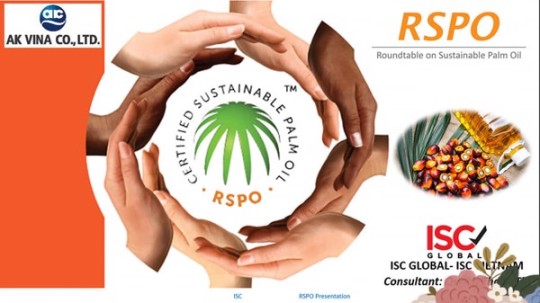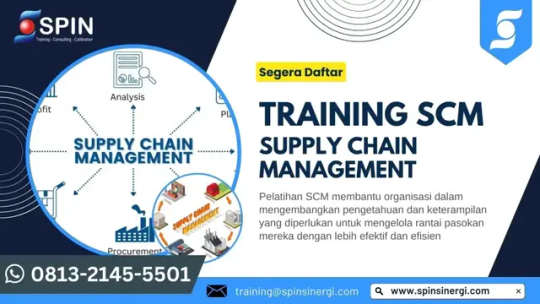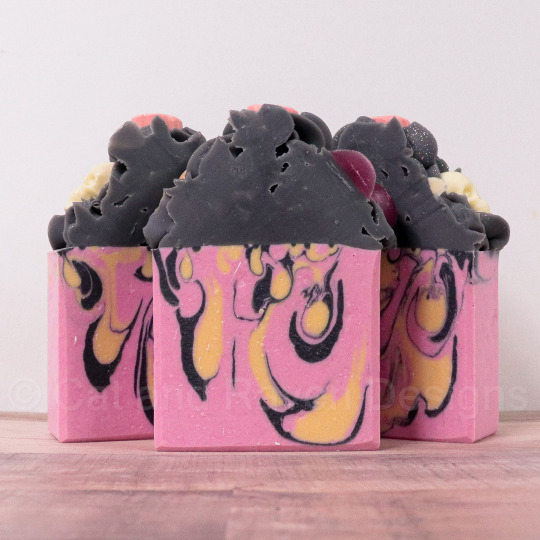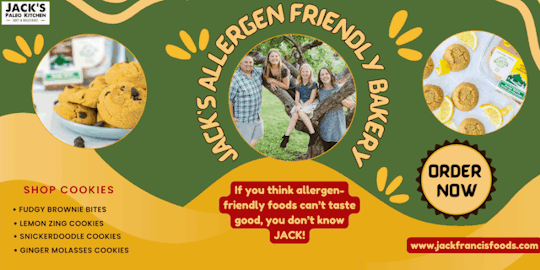#rspo
Text
#palmoil#kelapasawit#sawit#cpo#rspo#oilpalm#gapki#palmoilfree#indonesia#agriculture#perkebunan#food#sustainability#kabarsawit#deforestation#ispo#petanisawit#crayfish#sobatsawit#oil#minyaksawit#foodie#bpdpks#environment#sawitbaik#b#naijafood#bpdp#nigerianfood#palm
0 notes
Text
การรับรองมาตรฐาน RSPO เติบโตขึ้นจากสามประเทศในปี 2551 เป็น 21 ประเทศในปี 2564 คิดเป็น 4.5 ล้านเฮกตาร์ของพื้นที่ปลูกปาล์มน้ำมันที่ยั่งยืน
แผนภูมิรายงานผลกระทบปี 2565 ของ RSPO สานต่อความพยายามด้านความยั่งยืนของอุตสาหกรรมน้ำมันปาล์มในการบรรเทาปัญหาการเปลี่ยนแปลงสภาพภูมิอากาศ ปรับปรุงวิถีชีวิตของเกษตรกรรายย่อย และยุติการเอารัดเอาเปรียบคนงาน
ผู้มีส่วนได้ส่วนเสียทั่วโลกจากอุตสาหกรรมน้ำมันปาล์มรวมตัวกันเพื่อร่วมงาน RSPO Annual Roundtable on Sustainable Palm Oil (RT2022)…

View On WordPress
0 notes
Text
A conspiracy theory as crude as Athena's many typos
A conspiracy theory as crude as Athena’s many typos
‘BSI, a company that conducts audits for the RSPO is listed as a corporate partner of Orangutan Land Trust at the same time as Kulim was their corporate partner. BSI approved the certification of Kulim Malaysia Berhad as ‘sustainable’. Bart Van Assen, Technical Advisor for Orangutan Land Trust was conducting audits of palm oil companies at the same time.‘ (archive)Dennis, 2021…

View On WordPress
#@athenadennis#@contentcatnip#@creativeathena#@palmoildetect#BoycottPalmOil#Athena Dennis#athenacreativeweb.com#athenadennis.com#contentcatnip.com#creativeathena#fourseasonspoetry.wordpress.com#palmoil#palmoildetectives.com#RSPO
0 notes
Text
Roundtable on Sustainable Palm Oil (RSPO) to Host Supply Chain Forum in Africa
Africa is gearing up to host a landmark event that promises to shape the future of sustainable palm oil supply chains across the continent, The Roundtable on Sustainable Palm Oil (RSPO), a global non-profit organization dedicated to promoting sustainable palm oil production and consumption, is set to host its highly anticipated Africa Supply Chain Forum 2024 in Cape Town, South Africa, from April…

View On WordPress
0 notes
Text
Palm Oil Market: Navigating Market Dynamics, Trends, and Regulatory Frameworks
The global palm oil market size is expected to reach USD 100.4 billion by 2030, expanding at 5.1% CAGR from 2024 to 2030, according to a new report by Grand View Research, Inc. The growth is driven by increasing demand for food applications and eco-friendly, organic, and sustainable products. Personal care products and cosmetic industries are also major sectors accountable for the growth of products. Palm oil is an edible oil that is derived from the mesocarp of the palm fruit. Indonesia and Malaysia are the largest producers as well as exporters of the product globally. It is extensively used in the food, cosmetic, and personal care products industries, among others. Asia pacific region is the largest consumer of palm oil owing to its key application for food preparation in the region.

Palm Oil Market Report Highlights
Conventional segment dominated the market with a revenue share of more than 99% in 2023. This is attributable to the low price and easy availability of the segment.
Fractionated palm oil dominated the market with a revenue share of over 39.2% in 2023. This is attributable to the ease of availability of product and economically feasible prices.
Food & beverages end-use dominated the market with a revenue share of more than 66.5% in 2023. Its high share is attributable to increasing usage of product in end use applications of the industry and increasing product portfolios that demand palm oil as a raw material.
Asia Pacific region dominated market with a revenue share of 68.9% in 2023. This is attributed to growing consumption by rising population of the region as well as high demand from end use applications industries, such as food & beverage industries.
For More Details or Sample Copy please visit link @: Palm Oil Market Report
The global product market is amalgamated as well as competitive in nature. It is one of the well-established companies with a developed value chain. Internationally, the product market has a resilient network of distributors, traders, and strong relationships with manufacturers. The overall product market is considered to have an extremely cohesive supply chain and increasing demand for the product for an expansive range of end-use applications comprising biodiesel, food & beverages, and personal care & cosmetics, among others.
Fractionated palm oil product segment appeared to be the largest segment in the international market, accounting for the highest share in 2022 of the global revenue of the market. This segment is the most popular due to its easy economic availability worldwide and manufacturing ease owing to 50% unsaturated and 50% fatty acid constituent nature of palm oil. The segment is expected to expand over the forecast period owing to its extensive utilization by the people.
#PalmOilMarket#SustainablePalmOil#PalmOilIndustry#PalmOilProduction#GlobalPalmOil#PalmOilTrade#PalmOilDemand#PalmOilSustainability#PalmOilSupplyChain#PalmOilExports#PalmOilPrices#PalmOilPlantations#PalmOilConsumption#RSPO (Roundtable on Sustainable Palm Oil)#PalmOilCertification#PalmOilDeforestation#PalmOilRegulation#PalmOilEconomy#PalmOilCommunity#PalmOilAwareness
0 notes
Text
RSPO là gì? Chứng nhận chuỗi cung ứng RSPO
1. RSPO là gì?Dầu cọ được sản xuất và sử dụng làm nguyên liệu cho rất nhiều ngành hàng như bột giặt, mỹ phẩm, thực phẩm… Nó có thể có mặt trong một loạt các sản phẩm như bánh mì, bánh kẹo, dầu gội đầu, mỹ phẩm, chất tẩy rửa và kem đánh răng … Theo Cục thống kê ÚC, loại dầu thực vật này được tìm thấy trong 40-50% các sản phẩm gia dụng của Úc. Trong thế kỷ 20 sự phát triển, mở rộng nhanh chóng…

View On WordPress
#My rspo login#RSPO Certificate#Rspo là gì#Rspo org members#Rspo palm trace#RSPO standard#Segregated palm oil rspo#tiêu chuẩn RSPO
0 notes
Text
Training Export Import Management
Training Export Import Management
Training Export Import Management (Exim) – Ekspor dan impor merupakan dua elemen penting dalam perdagangan internasional. Kegiatan ini memungkinkan perusahaan untuk memperluas pasar mereka dan meningkatkan pendapatan dengan menjual produk maupn layanan ke luar negeri atau memperoleh bahan baku dari negara lain. Namun, dalam melakukan kegiatan ekspor dan impor…

View On WordPress
#Inhouse Training Manajemen Logistik#Inhouse Training Manajemen Rantai Pasok#Inhouse Training Rantai Pasok#Inhouse Training Rantai Pasok ISPO#Inhouse Training Rantai Pasok Kontruksi#Inhouse Training Rantai Suplai RSPO#Inhouse Training SCM#Inhouse Training Supply Chain#Inhouse Training Supply Chain Management#Jadwal Pelatihan Manajemen Logistik#Jadwal Pelatihan Manajemen Rantai Pasok#Jadwal Pelatihan Rantai Pasok#Jadwal Pelatihan Rantai Pasok ISPO#Jadwal Pelatihan Rantai Pasok Kontruksi#Jadwal Pelatihan Rantai Suplai RSPO#Jadwal Pelatihan SCM#Jadwal Pelatihan Supply Chain#Jadwal Pelatihan Supply Chain Management#Jadwal Training Manajemen Logistik#Jadwal Training Manajemen Rantai Pasok#Jadwal Training Rantai Pasok#Jadwal Training Rantai Pasok ISPO#Jadwal Training Rantai Pasok Kontruksi#Jadwal Training Rantai Suplai RSPO#Jadwal Training SCM#Jadwal Training Supply Chain#Jadwal Training Supply Chain Management#Lembaga Pelatihan Manajemen Logistik#Lembaga Pelatihan Manajemen Rantai Pasok#Lembaga Pelatihan Rantai Pasok
0 notes
Text
Palm Oil
The demand for Palm Oil in products has led to massive deforestation in Sumatra, Borneo and other Southeast Asian countries, leading to habitat loss for many species, ranging from tigers to numerous species of bat.
So what? You ask. It isn't like there's anything I can do about it.
Well, guess what, there is something you can do, and it doesn't involve a boycott.
Just look for this label on products containing palm oil:

image description: the RSPO certified symbol with a green palm and the words 'Certified sustainable palm oil' in black and 'RSPO' in orange around it
This symbol indicates that the palm oil used meets the sustainability standards of the Roundtable on Sustainable Palm Oil (RSPO).
Further Reading:
RSPO website: https://rspo.org/
Get involved as an Individual | RSPO: https://rspo.org/as-an-individual/
RSPO ScanApp (France only): https://rsposcanapp.com/
Products with RSPO Label | RSPO: https://rspo.org/as-an-organisation/our-trademark/products-with-rspo-label/
Palm Oil Scorecard | World Wildlife Fund: https://palmoilscorecard.panda.org/#/home
PalmOil Scan | Cheyenne Mountain Zoo and World Association of Zoos and Aquariums: https://www.waza.org/news/waza-palm-oil-scan-app/
29 notes
·
View notes
Text







Death of Kore, frosted soap bar.
Scent: Persephone's Kiss. Described as Mandarin orange, melon, blackberry, and violet leaf! Feel the freshness of its middle notes of lavender, jasmine, lily-of-the-valley, and nectarine, before reaching the dreamy base of honey, oak, and musk.
Ingredients: olive oil, coconut oil, palm oil (RSPO), sodium hydroxide, almond oil, castor oil, canola oil, sodium lactate, fragrance, micas, kaolin clay, and biodegradable glitter.
Size: Aprox. 6-7 oz (170-198g). Because our soaps are handmade and hand cut, they may vary slightly in weight from bar to bar.
#soapfam#soap#soapmaking#cat and raven designs#candrsoap#cold process soap#lgbtq#soap business#fancy soap#gay soap#kore#persephone#pastel goth
28 notes
·
View notes
Text
RSPO suspension of Brazil palm oil exporter tied to Mongabay land-grabbing report

Agropalma, the only Brazilian company with the sustainability certificate issued by the Roundtable on Sustainable Palm Oil (RSPO) — a members organization including palm oil growers, traders, manufacturers, retailers, banks, investors and others — has had its certificate "temporarily suspended" since February.
In December 2022, Mongabay published a yearlong investigation revealing that more than half of the 107,000 hectares (264,000 acres) registered by Agropalma in northern Pará state derived from fraudulent land titles and even the creation of a fake land registration bureau. Part of the area overlaps ancestral land claimed by Indigenous peoples and Quilombolas — descendants of Afro-Brazilian runaway slaves — including two cemeteries, which is at the center of a seven-year legal battle led by state prosecutors and public defenders.
Just a few weeks after the publication of the investigation, representatives from the certifiers contacted Quilombola leaders "to understand the denouncements" published by the report, they went to the region and carried out audits in all affected communities; soon after, IBD Certifications Ltd. suspended Agropalma’s RSPO certificate.
Assurance Services International (ASI), which evaluates the work of certifiers, confirmed that “the report was a reason for ASI to conduct a compliance assessment to IBD, the certifier of Agropalma, at the Certificate Holder’s premises." University professors hired by ASI as local experts also cited the Mongabay investigation and this reporter when they contacted other key sources quoted in the report, as shown in email correspondence seen by Mongabay.
Continue reading.
#brazil#politics#environmentalism#environmental justice#brazilian politics#quilombos#indigenous rights#mod nise da silveira#image description in alt
5 notes
·
View notes
Note
Do you have any good soap examples or links?
Okay this took me a hot sec bc I super debated linking to my roommates business (which is where I get my soap) because her soap is amazing and I love advertising for her, but then y'all will have my address and shit. 😂
At the end of the day, most soap is fine. Any unscented bar you buy at the grocery store will be fine to wash your sex toys with unless you are sensitive to any of the ingredients. And this is true whether it's a super high end, all organic, all "natural" (tip: the word natural is just a marketing gimmick) soap that is just soap, or a cheaper, mass produced, lots of processed chemicals "soap." (In quotes because lots of things we call soap are actually detergents. If the bar is labelled as soap, it's soap. Detergents aren't necessarily bad either, just contain more processed ingredients. There are pros and cons to this and we just do not have the time to get into all that.)
Shopping local, or from small businesses based online, is a little trickier. So here's way more information about soap than anyone needs.... If you're just gonna grab some unscented soap (bar or liquid, for the record! Both are good) at your local grocery story, you can stop reading now. But if you wanna read about how to pick out a great bar of soap...
Disclaimer: Everything I'm about to say is about cold process soap. There's another kind of soap, melt and pour. You can find all sorts of info online about the difference. I use cold process soap, and that's what I'm familiar with. If you ask a soapmaker which they make, they will be able to tell you. If they cannot tell you which they make, you probably should not buy soap from them because the production is very, very different.
I always recommend shopping local if you can, but a lot of small business soapmakers aren't super aware of what they're doing. I have seen some pretty horrendous things at farmers markets. If you're looking for good quality soap, you want clear ingredient statements.
The unscented soap I was using for a while was literally just coconut oil, palm oil, olive oil, canola oil, and lye. Oils used can vary, but these are super common. (If you're into sustainability, make sure the palm oil, if included, is sustainably sourced! There will usually be a certifying body listed if it is, like RSPO. There's a bunch of different organizations that will certify palm oil.) Sunflower oil is another common one I've seen. Avocado oil is rarer, and is usually an add-in, not a main ingredient.
They may also be written on the label differently, for example: sodium oleate (olive oil), sodium cocoate (coconut oil), sodium canolate (canola oil) for example. If you're looking for soap that isn't for your sex toys, it may also include things like "fragrance oil" or "essential oil" or "mica" (a colorant.) I, as a rule, do not buy soaps fragranced with essential oils. Especially if the seller seems the type or admits to getting those essential oils from a company like DoTerra. People just are not trained on what essential oils can do. And I don't mean in a cure cancer way. I mean in a "DoTerra reps are regularly told to encourage people to use orange essential oil on their skin despite the fact that orange essential oil is phototoxic and will cause chemical burns on the skin if exposed to sunlight for too long."
Fragrance oils are more heavily regulated, and less likely to be some unique mix the soapmaker put together on their own. Before I started following this rule, I got a LOT of soaps that were labelled things like "peppermint" only to get home and find out the soapmaker mixed pine essential oil in there to make it "more Christmassy." I usually found this out by breaking out in hives. People using essential oils are also more likely to have just bought random oils from walmart or Michaels or wherever, and added whatever amount they thought would make it smell good. Which is how you end up with an essential oil ratio so high that you might get those same phototoxic effects. With fragrance oils, people are more likely to follow the instructions. But I digress.
Clays are also sometimes used as a colorant and/or to improve the soap. These you should not use on your toys. I fucking love a rose clay soap because it is a very gentle exfoliant. A lot of soap makers just use it because it makes a pretty pink color and never even realize it's an exfoliant. Exfoliants can create micro scratches in your toys. Anything labelled "scrub," don't use it. (Also scrubs often contain sugar which is definitely not something you want residue of left on your toy...) Clays will almost always be listed as "clay," usually with the specific type. Rose clay is often "Kaolin Clay, Pink."
You may also see things listed like Shea butter, mango butter. These are moisturizers. I usually don't care about these if the soap is just for my skin. I figure you're only going to get so much moisturizing out of a product that you're immediately rinsing off. I look for these in my lotions, body butters, body salves, skin and lip balm. But it never hurts, and especially if you're not using other moisturizing products.
You'll probably also see lots of other add ins! Calendula flowers is a big one I've seen a lot of lately. Has anti-inflammatory properties, soothes irritated skin, may or may not encourage healing. I'm a fan. I have actually seen a noticeable difference in how sensitive my skin is when using soap with calendula oil in it, though not such a big difference that I go out of my way to find it.
Seeds and ground coffee are also common exfoliants. Walnut shells are, too, watch out for allergies on that one. Even lemon peel. Botanicals are common, flower petals, leaves, stems. These may or may not be mixed into the soap, they may just be decoration on top.
I actually now just use whatever soap is handy, even if it's scented, because I do not personally have an issue with the scented soaps we keep in our house for use. In part because I have sensitive skin so we're picky anyway, and in part because I am very diligent about rinsing my toys. Scented ingredients can often throw off your pH, which is part of how your body fights off potential infections.
Okay, I need to shut up now.
#this is what i have learned listening to my roommate all these years#i hope it comes in handy for other people#switching from bodywash to soap made a world of difference for my skin#not kink
1 note
·
View note
Text
Stearic Acid Prices, Pricing, Trend, Supply & Demand and Forecast | ChemAnalyst

Stearic Acid Prices, a saturated fatty acid derived from animal and vegetable fats, plays a pivotal role across various industries, including cosmetics, pharmaceuticals, plastics, and food. Understanding the dynamics of stearic acid prices is essential for stakeholders navigating these markets. The pricing of stearic acid is influenced by a multitude of factors spanning from raw material availability to demand-supply dynamics and macroeconomic conditions. One significant determinant is the source of stearic acid production. With its origins deeply rooted in natural fats like palm oil, coconut oil, and tallow, any fluctuations in the prices of these raw materials can reverberate across the stearic acid market. Environmental and geopolitical factors affecting the production or availability of these feedstocks can lead to price volatility.
Furthermore, the demand for stearic acid is closely intertwined with its diverse applications. In cosmetics and personal care products, stearic acid serves as an emulsifier, stabilizer, and thickening agent. The ever-evolving trends in beauty and skincare, along with shifting consumer preferences towards natural and sustainable ingredients, can influence the demand for stearic acid and subsequently impact its pricing. Similarly, in the plastics industry, stearic acid finds utility as a lubricant and mold release agent, contributing to the smooth processing of polymers. The growth trajectories of sectors like automotive, packaging, and construction directly affect the demand for plastic additives like stearic acid, thereby influencing its pricing dynamics.
Moreover, the pharmaceutical industry relies on stearic acid for its role as an excipient in drug formulations. The global healthcare landscape, characterized by factors such as population demographics, disease prevalence, and regulatory frameworks, can shape the demand for pharmaceutical products and consequently impact the prices of stearic acid. Additionally, stearic acid is utilized in food production as an emulsifier and lubricant, enhancing texture and mouthfeel in products ranging from confectionery to baked goods. Fluctuations in agricultural markets, coupled with evolving dietary trends and regulatory changes, can influence the demand and pricing of stearic acid in the food industry.
Get Real Time Prices of Stearic Acid: https://www.chemanalyst.com/Pricing-data/stearic-acid-1098
In recent years, sustainability concerns have emerged as a significant driver impacting stearic acid prices. With increased awareness regarding environmental conservation and ethical sourcing, stakeholders across industries are under pressure to adopt sustainable practices throughout their supply chains. This has prompted a shift towards sourcing stearic acid from certified sustainable and renewable sources, such as RSPO (Roundtable on Sustainable Palm Oil) certified palm oil plantations. However, adhering to these standards often entails additional costs, which can translate into higher prices for sustainably sourced stearic acid.
Furthermore, the global economic landscape and currency fluctuations play a crucial role in determining stearic acid prices. Being a globally traded commodity, stearic acid prices are susceptible to changes in currency exchange rates, trade policies, and macroeconomic indicators. Economic downturns or geopolitical tensions in key stearic acid producing regions can disrupt supply chains and impact prices. Conversely, periods of economic growth and stability may fuel demand for stearic acid across industries, leading to price appreciation.
The interplay of these multifaceted factors underscores the complexity of stearic acid pricing. Market participants must stay attuned to a plethora of variables, ranging from raw material dynamics to regulatory shifts and global economic trends, to make informed decisions and mitigate risks. Moreover, as sustainability continues to gain prominence, stakeholders will likely face growing pressure to adopt environmentally responsible practices, which may reshape the dynamics of stearic acid pricing in the years to come. In this dynamic landscape, a nuanced understanding of market fundamentals and a proactive approach to risk management are indispensable for navigating the stearic acid market effectively.
Get Real Time Prices of Stearic Acid: https://www.chemanalyst.com/Pricing-data/stearic-acid-1098
Contact Us:
ChemAnalyst
GmbH - S-01, 2.floor, Subbelrather Straße,
15a Cologne, 50823, Germany
Call: +49-221-6505-8833
Email: [email protected]
Website: https://www.chemanalyst.com
0 notes
Text

Shop Gluten Free Chocolate Chip Cookies - Jack’s Allergen Friendly Bakery
Explore a delectable world of flavor when you choose to Shop Gluten Free Chocolate Chip Cookies at Jack’s Allergen Friendly Bakery. Crafted with care and precision, our cookies provide a delightful snacking experience while being free from gluten. Our exclusive recipe features a proprietary flour blend, organic coconut flour, arrowroot powder, sweet potato flour, and RSPO certified palm shortening, ensuring a perfect balance of taste and quality. Each bite is a celebration of inclusivity and flavor, making these cookies an ideal choice for those with dietary restrictions.
#Best Chocolate Chip Cookie#Buy Best Chocolate Chip Cookie Online#Shop Gluten Free Chocolate Chip Cookies .
0 notes
Text
'Malaysia should remain as an observer Instead, Plantation and Commodities Minister Datuk Seri Johari Abdul Ghani said Malaysia should have let Indonesia do so and support the move made by the republic. "In my opinion, Malaysia should not have filed a complaint with the WTO. Johari said according to statistics released by OilWorld in 2023, an estimated 25.2 per cent of Indonesia' s crude palm oil... MALAYSIA should not have filed a dispute complaint against the European Union (EU) with the World Trade Organisation (WTO) over palm oil-based biofuels, the Dewan Rakyat was told. Instead, Plantation and Commodities Minister Datuk Seri Johari Abdul Ghani said Malaysia should have let Indonesia do so and support the move made by the republic. "In my opinion, Malaysia should not have filed a complaint with the WTO. "This is because the Delegated Act under the Renewable Energy Directive (RED II) targets biofuels based on palm oil and does not address sustainability issues related to palm oil in general. "Malaysia should instead support and remain as an observer in the case of Indonesia in defending palm oil as a biofuel source against any discrimination," he said in response to Teresa Kok (Pakatan Harapan-Seputeh). Kok had asked whether the WTO's decision on Malaysia's appeal regarding the EU's discrimination against palm oil still allows EU to implement the Delegated Act that bans palm oil as biofuel by 2030. Johari said according to statistics released by OilWorld in 2023, an estimated 25.2 per cent (12.2 million metric tonnes) of Indonesia's crude palm oil (CPO) production was processed to produce palm methyl esters (PME), which is a primary biofuel blend input in Indonesia and Malaysia. During the same period, only 7.7 per cent (1.4 million metric tonnes) of Malaysia's CPO production was processed to produce PME. Indonesia filed a complaint to WTO on Dec 9, 2019. Malaysia filed its complaint 13 months later on Jan 15, 2021. Johari further said: "When Indonesia saw that Malaysia also filed the issue to WTO, they decided to suspend their case, leaving Malaysia. "Hence, the decision made by WTO saw no one win. "There are 20 issues related to this, with 10 won by the EU and 10 by Malaysia. "However, the general public out there lacks understanding of this issue. "They perceive Malaysian palm oil as worse than that of Indonesia." Meanwhile, in reply to a supplementary question from Bakri Jamaluddin (Perikatan Nasional-Tangga Batu), Johari said Malaysia must continue to engage with the EU and its stakeholders to explain the Malaysia Sustainable Palm Oil (MSPO) scheme. "Today, our export by the industry players to Europe was due to the Roundtable on Sustainable Palm Oil (RSPO) and MSPO. "RSPO is internationally recognised. As for MSPO — some recognise it, while some do not. "Hence, one of the strategies is to engage and explain to the relevant stakeholders about MSPO. "The MSPO standard is better than RSPO as it covers a wide spectrum of our palm oil plantation, including the smallholders. "We must do the engagement from now on to ensure that our palm oil products can be accepted when MSPO becomes one of the prerequisites in exporting." Bakri had asked how far MSPO and RSPO can address the boycott of Malaysian palm oil. Johari added: "The EU is working on its specification to fix terms for us to export our products. "We need to comply with the regulation that they are discussing with us, the European Union Deforestation Regulation (EUDR). "Four main points of EUDR are no deforestation, must have a traceability system, must have a legitimate land title (of palm oil plantation) and on labour. "All these four, we are engaging the EUDR, including introducing MSPO. If they can accept the MSPO, all products can go (can be exported)." The EU announced the EUDR on Dec 6, 2022, stating that the regulation is aimed at preventing deforestation due to agricultural activities.
0 notes
Text
Hyatt

Atmosphere sustainability
The following objectives were declared in 2014: by the end of 2020, each region's water and greenhouse gas (GHG) emissions per guest night and per square metre should have decreased by 25% from 2006 levels. Our goal is to save 30% of the water used per visitor night in water-stressed areas.
BUY DIVERT WASTE RESPONSIBLY
Objectives declared in 2014: By the end of 2018, select more environmentally friendly substitutes for a minimum of eight categories of purchases.
2014 saw the announcement of the goal:
By the end of 2020, every managed hotel will divert more than 40% of its waste from landfills.
Combating food waste is a continuous effort that involves full-service hotels developing measures for managing food waste, such as à la carte buffet preparation and smaller displays.
· More than 190,000 pounds of extra edible food were given to nearby nonprofits.
• Almost 7,000 tonnes of food waste were composted instead of dumped in landfills.

PURCHASE RESPONSIBLY
Goals announced in 2014:
Choose more sustainable alternatives for at least eight purchasing categories by the end of 2018
Growing the number of certified goods
• Made the switch to linen for the Hyatt Place and Hyatt House hotels in the United States and Canada that is produced and distributed by facilities certified to STeP by OEKO-TEX® and made of cotton certified to the Better Cotton Initiative (BCI).
• At Hyatt Place and Hyatt House hotels throughout the Americas, palm oil soap that complies with Roundtable on Sustainable Palm Oil (RSPO) standards is now offered.
• Persistent attempts to raise the number of certified goods in categories including paper and energy-efficient appliances
1 note
·
View note
Text
Sustainability in the China Dairy and Soy Market: Challenges and Opportunities
Sustainability is increasingly becoming a focal point in the China dairy and soy market, driven by growing consumer awareness, regulatory initiatives, and industry efforts to address environmental, social, and economic concerns. While there are challenges to overcome, there are also significant opportunities for stakeholders to promote sustainability in the dairy and soy sector.

For more insights on market forecast, download a free report sample
Here's an overview of the challenges and opportunities:
Challenges:
Environmental Impact: The dairy and soy industry can have significant environmental impacts, including deforestation, greenhouse gas emissions, water pollution, and habitat destruction. Unsustainable farming practices, such as intensive livestock farming and monoculture soybean cultivation, contribute to environmental degradation and biodiversity loss.
Water Usage: Water scarcity and inefficient water use are major challenges in the dairy and soy supply chain. Dairy farming and soybean cultivation require large amounts of water for irrigation, feed production, and animal husbandry, leading to competition for water resources and depletion of freshwater sources in water-stressed regions.
Deforestation and Land Conversion: The expansion of soybean cultivation, particularly for soybean oil and animal feed production, has been linked to deforestation and land conversion in regions such as the Amazon rainforest and the Cerrado biome. Deforestation contributes to habitat loss, biodiversity decline, soil erosion, and carbon emissions, exacerbating climate change and environmental degradation.
Livestock Emissions: Livestock farming, including dairy cattle, can be a significant source of greenhouse gas emissions, primarily methane and nitrous oxide. Methane emissions from enteric fermentation and nitrous oxide emissions from manure management contribute to global warming and climate change, posing environmental challenges for the dairy industry.
Supply Chain Transparency: Limited transparency and traceability in the dairy and soy supply chain make it difficult to monitor and address sustainability issues effectively. Challenges such as supply chain complexity, opaque sourcing practices, and inadequate data sharing hinder efforts to assess and mitigate environmental and social risks.
Opportunities:
Sustainable Sourcing Practices: There is an opportunity to promote sustainable sourcing practices in the dairy and soy supply chain, including responsible land use, conservation agriculture, agroforestry, and soil conservation techniques. By adopting sustainable farming practices, such as rotational grazing, cover cropping, and organic farming, producers can minimize environmental impact and enhance ecosystem resilience.
Certification Programs: Certification programs, such as the Roundtable on Sustainable Palm Oil (RSPO) and the Round Table on Responsible Soy (RTRS), provide frameworks for promoting sustainable production and sourcing of soy and dairy products. Encouraging farmers and suppliers to obtain certification and adhere to sustainability standards can help improve environmental performance and social responsibility in the industry.
Technology and Innovation: Technology and innovation offer opportunities to enhance sustainability throughout the dairy and soy supply chain. Advances in precision agriculture, digital farming technologies, and remote sensing tools can optimize resource use, reduce environmental footprint, and improve productivity. Additionally, biotechnology and genetic improvements can lead to more efficient feed conversion, reduced methane emissions, and improved animal welfare.
Supply Chain Collaboration: Collaboration among stakeholders along the dairy and soy supply chain, including farmers, processors, retailers, and consumers, is essential for advancing sustainability goals. Initiatives such as multi-stakeholder partnerships, supply chain transparency platforms, and industry coalitions can foster dialogue, knowledge sharing, and collective action to address sustainability challenges collaboratively.
Consumer Awareness and Demand: Increasing consumer awareness and demand for sustainably sourced dairy and soy products present opportunities for companies to differentiate their brands and capture market share. By transparently communicating sustainability initiatives, certifications, and ethical sourcing practices to consumers, companies can build trust, loyalty, and brand reputation in the marketplace.
In summary, while sustainability poses challenges for the China dairy and soy market, there are significant opportunities for stakeholders to promote environmental stewardship, social responsibility, and economic viability in the industry. By embracing sustainable sourcing practices, leveraging technology and innovation, fostering supply chain collaboration, and responding to consumer demand for ethical and environmentally friendly products, the dairy and soy sector can contribute to a more sustainable future for China's food system.
0 notes